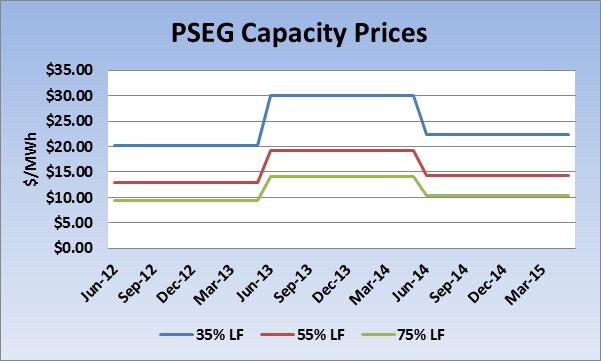With President Obama directing the Environmental Protection Agency (EPA) to implement policies to curb emissions from coal fired power plants, the Mercury and Air Toxin Standards (MATS) rule taking effect and continued low prices, it has become uneconomic for older and smaller coal plants to install environmental controls. Between 2013 and 2016 approximately 40,000MW of coal generation will be retired.
Is King Coal’s Demise Exaggerated? Energy Risk Management Suggests...
Posted by Dennis Vegas on Aug 9, 2013 9:04:00 AM
Topics: energy risk management, energy procurement, PJM Energy, energy regulations
Summer 2013: Weather Impact on Energy Reliability, Prices and Risk
Posted by Dennis Vegas on Jun 7, 2013 1:25:00 PM
According to the National Oceanic and Atmospheric Association (NOAA), summer 2013 will be above average in West Texas and in the Mid-Atlantic states. The outlook both in terms of temperatures (left hand side) and projected rainfall (right hand side) is summarized in the following set of four maps, with the top maps being the outlook for June and the bottom ones the outlook for the entire summer (June-August).
Topics: ERCOT, energy risk management, energy management consulting, energy procurement, weather outlook, PJM Energy, energy reliability
Volatile Energy Capacity Prices in PJM - Take a closer look at PSEG
Posted by Dennis Vegas on Feb 22, 2013 6:32:00 PM
A critical element of effective energy risk management is an understanding of all of the cost components behind a retail electric bill and what causes these components to move. Recently, capacity costs, which are determined by PJM’s Reliability Pricing Model, or RPM, have followed a bell shaped curve across multiple utilities in the Eastern Mid-Atlantic Region, including the Public Service Electric & Gas (PSEG) area in New Jersey.[1]
Topics: energy risk management, energy, PJM Energy
Limited Demand Response: Will PJM experience further restrictions?
Posted by Dennis Vegas on Feb 19, 2013 11:50:00 AM
A recent proposed change to the PJM demand response program could reduce the value of “limited demand response” to end users.
Topics: energy, demand response, PJM Energy




